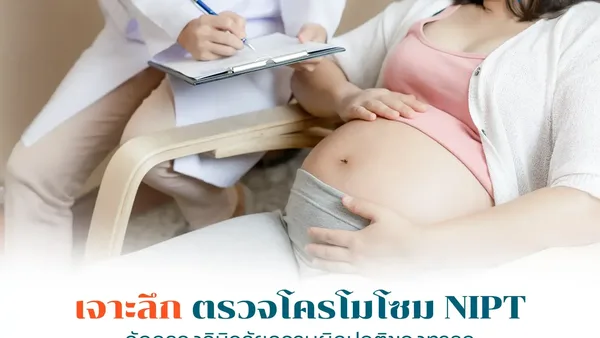Menstrual cramps (dysmenorrhea) are common in women of reproductive age. Usually, there is a slight cramping sensation during menstruation. However, if the pain is severe, it could indicate an underlying health issue. This article explores the causes of severe menstrual cramps, how to manage them, and treatment options.
Severe Menstrual Cramps
Severe menstrual cramps involve intense cramping in the lower abdomen during menstruation. In some cases, the pain begins before menstruation and continues even after the period ends. Pain relievers may offer minimal relief, significantly affecting daily activities during the menstrual cycle.
Normal Menstrual Pain
Typically occurs during days 1-3 of the menstrual cycle.
- Mild cramping in the lower abdomen due to uterine muscle contractions.
- May also involve back pain, headaches, diarrhea, or bloating.
Symptoms of Severe Menstrual Cramps
- Pain so severe it disrupts sleep.
- Heavy menstrual bleeding.
- Fever and fatigue during menstruation.
- Pain persists despite taking medication.
- Nausea, vomiting, diarrhea.
- Abnormal vaginal discharge (itchiness, irritation, unusual color or odor).
If these symptoms are observed, it is advisable to consult a doctor.
Causes of Severe Menstrual Cramps
The pain may be due to strong uterine contractions caused by a chemical called Prostaglandin, which reduces blood and oxygen supply to the uterus.
Risk factors include:
- Age between 20-30 years
- Early onset of menstruation
- Irregular periods
- Never given birth
- Smoking
- Family history of dysmenorrhea
High levels of prostaglandins can increase inflammation and pain. Severe cramps may also indicate underlying conditions such as:
- Uterine fibroids
- Abdominal adhesions
- Cervical stenosis
- Endometriosis
- Pelvic infections
- Vaginal structural anomalies
Health Conditions Signaled by Severe Cramps
- Structural abnormalities of the vagina
Congenital uterine issues, like vaginal septum or abnormal uterine development, may cause excessive bleeding and pelvic pain. - Abdominal adhesions
Often found in the pelvis (e.g., fallopian tubes, uterine appendages), or from surgeries. These adhesions can lead to urinary inflammation and painful periods. - Cervical Stenosis
Caused by:- Congenital issues
- Menopause (reduced estrogen makes the cervix less flexible)
- Cervical inflammation and scarring
- Cervical tears leading to scar tissue
- Cervical cancer
Narrowing of the cervix can cause painful periods and abnormal menstrual flow.
- Submucosal uterine fibroids
These fibroids distort the uterine lining, causing heavy bleeding and intense cramps. - Endometriosis
Caused by menstrual blood flowing backward into the pelvic cavity. Endometrial cells grow outside the uterus, leading to pain and heavy bleeding. - Pelvic Inflammatory Disease (PID)
Caused by bacterial infections in reproductive organs (cervix, ovaries, fallopian tubes). It results in vaginal bleeding and severe lower abdominal pain.
Is Severe Menstrual Pain Dangerous? When to See a Doctor
If you experience severe pain during menstruation, it could signal an underlying health problem. Untreated, it may lead to infections or other serious issues. Seek medical advice promptly for proper diagnosis and treatment.
Diagnosing Severe Menstrual Cramps
- Medical History
The doctor will assess the pain's type and severity. There are two types:- Primary Dysmenorrhea: Pain occurs only during menstruation and subsides within 12–72 hours. Common in younger women.
- Secondary Dysmenorrhea: Pain begins before menstruation and may continue afterward. Often accompanied by other symptoms like headaches, nausea, or vomiting, and may indicate conditions like endometriosis or fibroids.
- Pelvic Exam
Checks for abnormalities in the vaginal wall or uterus. A swab may be taken to test for cervical cancer. - Ultrasound
Uses sound waves to detect abnormalities in reproductive organs like uterine fibroids. - Hysteroscopy
A small instrument is inserted through the cervix to detect polyps or fibroids. This method is safe and minimally painful.
Treatment for Severe Menstrual Cramps
- Non-Medical Treatments
- Warm compress on the lower abdomen to relax muscles
- Gentle abdominal massage
- Sip warm water to maintain body temperature
- Light exercise to release endorphins, improve mood, and reduce pain
- Medications
- NSAIDs (non-steroidal anti-inflammatory drugs)
- COX-2 selective NSAIDs (for patients with stomach issues)
- Paracetamol
- Surgical Treatments If pain is due to underlying issues like large fibroids (>4–5 cm), endometrial polyps, chocolate cysts, or abdominal adhesions, surgery may be necessary.
- Open Surgery: Incision in the abdomen; longer recovery time.
- Laparoscopic Surgery: Minimally invasive with quicker recovery.
Severe Menstrual Pain and Infertility
Severe cramps can be linked to conditions that cause infertility:
- Polycystic Ovary Syndrome (PCOS): Hormonal imbalance affects ovulation, leading to irregular periods and infertility.
- Endometriosis: Persistent pelvic pain can lead to future infertility.
- Cervical Stenosis: Prevents sperm from reaching the egg, contributing to infertility.
Assisted reproductive technologies can help, such as:
- IUI (Intrauterine Insemination): High-quality sperm is injected directly into the uterus during ovulation to improve fertilization chances.
How to Prevent and Relieve Severe Menstrual Cramps
Although severe menstrual cramps in women can be difficult to control, aside from taking painkillers, there are simple tips that can help ease the pain more effectively:
- Eat vegetables and fruits rich in magnesium such as avocado, banana, papaya, broccoli, and ivy gourd. Magnesium helps relax muscles and can reduce cramping.
- Sip warm water to help regulate body temperature and reduce menstrual pain throughout the day.
- Gently massage the lower abdomen during the day to help relax the muscles and relieve pain.
- Exercise regularly to improve muscle flexibility.
- Get enough rest to allow the body to recover and better manage stress.
Summary
Severe menstrual cramps occur due to strong contractions of the uterine muscles, leading to intense lower abdominal pain. If you notice that your menstrual cramps are unusually intense, do not ignore them, as they may signal underlying health problems such as infections, uterine fibroids, or ovarian cysts. Some conditions could even lead to infertility. Therefore, if you experience such symptoms, consult a doctor promptly for a thorough diagnosis and timely treatment.
If you have any further questions, feel free to contact us via Line@ : @BeyondIVF





